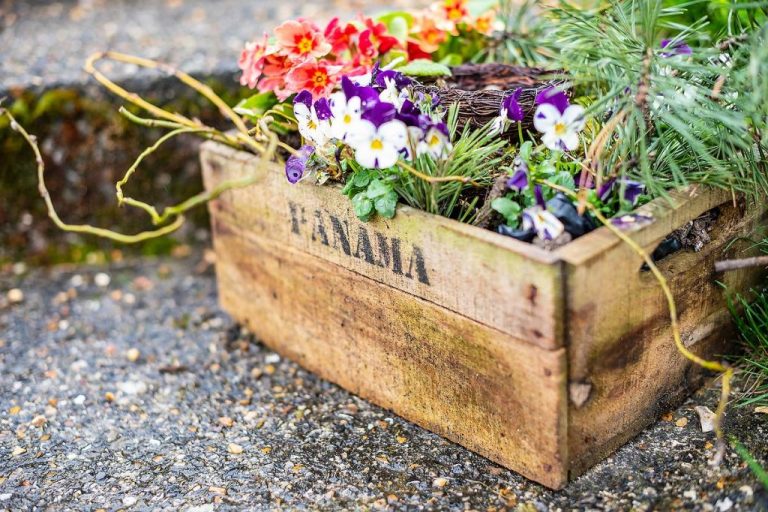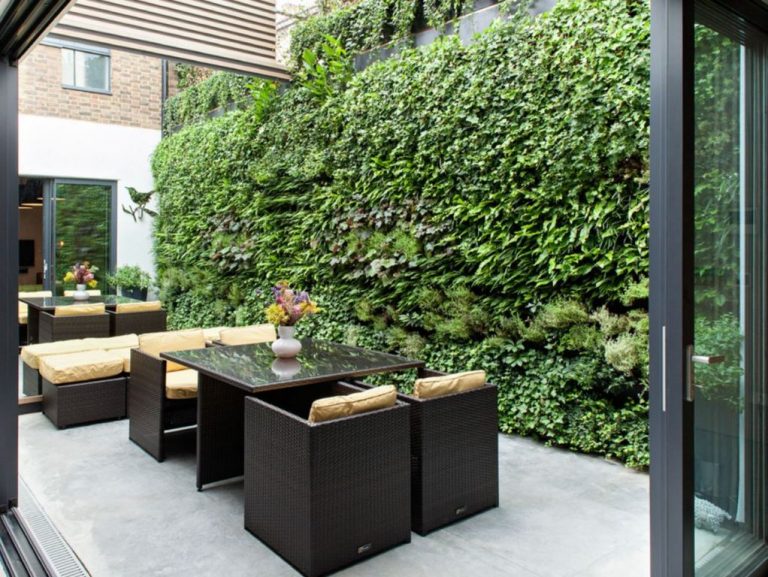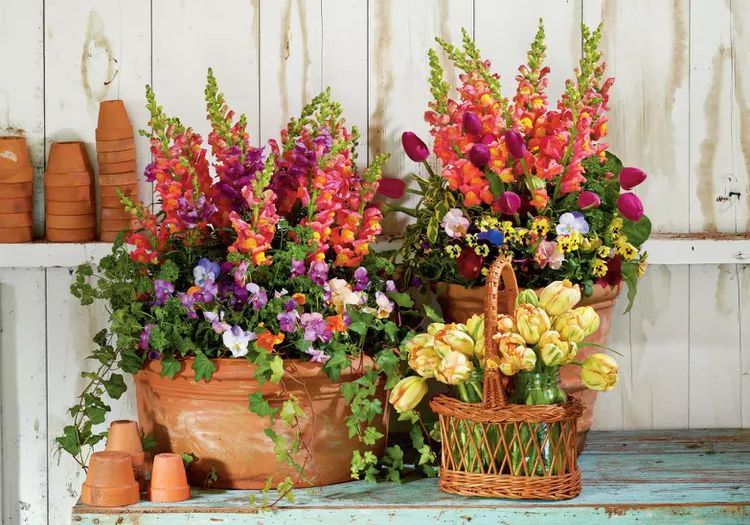Window Box Gardening: Bringing Nature To Urban Windowsills
Window box gardening refers to the practice of growing small plants in containers attached to the exterior of urban buildings, usually below windows. This allows city dwellers to enjoy the pleasures of gardening even if they don’t have access to a yard or garden plot.
Window boxes allow urban residents to bring nature’s beauty into the cityscape. Filling window boxes with flowering plants or edible greens can provide a welcoming splash of color and life on an otherwise dreary street. For those with green thumbs but without outdoor space, it is a simple way to try gardening and enjoy homegrown plants.
This article will provide tips on choosing, planting, and caring for window boxes through the seasons. We’ll recommend foolproof plants to try, and provide guidance on soil, sun, watering, and troubleshooting problems. With the right know-how, anyone can create a thriving mini garden in the most unlikely places. Window box gardening allows urbanites to connect with nature and beautify their surroundings, no matter how small their living space.
[1] http://www.climatehubs.usda.gov/hubs/international/topic/urban-agriculture
Choosing a Window Box
When selecting a window box, you’ll first want to consider which material best suits your needs and aesthetic preferences. The three most common materials for window boxes are wood, plastic and metal.
Wooden window boxes have a classic, natural look that can complement various architectural styles. Cedar and redwood are popular woods for their natural rot resistance. Keep in mind that untreated wood will weather and degrade over time, so look for wood that has been pre-treated or be prepared to apply protective sealants annually. Plastic window boxes are lighter weight, very durable and require no special maintenance. They come in many colors and can mimic the look of wood, wrought iron or other materials. Metal window boxes, usually aluminum or galvanized steel, have a contemporary, sleek appearance and are also quite sturdy and weather-resistant.
The length of your window will determine what width of window box will fit best. Make sure to measure the window carefully before purchasing a window box or other container. Standard window box sizes range from 2-4 feet in length. For larger windows, consider using multiple window boxes. In terms of depth, 8-12 inches is ideal for most plants.
When it comes to design, window boxes come in many decorative styles. You’ll find window boxes with carved details, scalloped edges, scrolling metalwork and other ornamental touches to elevate your home’s architecture. Consider a classic cottage-style box for a romantic vibe, distressed wood for a rustic feel or clean lines for a contemporary look. Let your personal style shine through in the window box design.
Best Plants for Window Boxes
When choosing plants for your window boxes, consider a mix of herbs, vegetables, and flowers that will thrive in your sunlight conditions. Here are some good choices:
For Full Sun:
Herbs like thyme, oregano, sage, and rosemary. Vegetables such as lettuce, kale, spinach, carrots, radishes, and beets. Sun-loving flowers like marigolds, zinnias, petunias, and nasturtiums.
For Partial Shade:
Leafy herbs like mint, parsley, chives, and basil. Lettuce, spinach, Swiss chard, and peas for veggies. Partial shade flowers include begonias, impatiens, pansies, and lobelia.
Trailing Plants:
Trailing plants like ivy, creeping Jenny, and sweet potato vine add lovely cascades. Trailing nasturtiums, petunias, and lobelia also work beautifully.
A mix of heights, colors, and textures creates an eye-catching display. Choosing a theme like an edible or pollinator garden also helps narrow down plant choices.
Getting the Right Soil
Picking the right soil is crucial for healthy plants and preventing problems like root rot. Avoid using regular garden soil in window boxes, as it will become compressed and limit drainage. Instead, opt for a commercial potting mix formulated for containers (SFGate). Potting mixes are lightweight, retain moisture, and allow excess water to drain out. They typically contain ingredients like peat moss, compost, vermiculite, and perlite to improve aeration and drainage.
Adding compost or organic fertilizers to potting soil gives plants a nutritional boost. According to SFGate, mixing in slow-release fertilizer at planting time provides nutrients for the whole season. Top dressing with compost or organic fertilizer every 4-6 weeks replenishes nutrients that get used up over time. However, take care not to over-fertilize as this can burn plant roots.
Check soil moisture regularly, as potting mix dries out faster than garden soil. Water thoroughly until it drains from the bottom of the box, but don’t let plants sit in soggy soil. Consider lining boxes with landscape fabric or gravel to further enhance drainage (Gardenista). With the right soil mix, your window box plants will thrive all season long.
Watering and Feeding
Ensuring your window box plants get the right amount of water and nutrients is key to their health. Most experts recommend watering window boxes daily, especially during hot, dry periods. However, be careful not to overwater as too much moisture can lead to root rot. A good rule of thumb is to check the soil moisture regularly by digging your finger an inch down into the soil and only watering when the top inch is dry.
You may need to adjust watering frequency based on factors like sun exposure, plant types, weather, and container size. South-facing window boxes or those in full sun may need more frequent watering. Succulents and drought-tolerant plants require less water than thirsty annuals and vegetables. Pay attention to soil moisture rather than sticking to a fixed schedule.
In terms of fertilizer, use a balanced liquid fertilizer diluted to half strength every 2-3 weeks during the growing season. Slow release granular fertilizers added at planting time can provide nutrients all season. Avoid over-fertilizing as excess salts can burn plant roots.
Sun and Temperature Considerations
Window boxes can experience intense heat and sun exposure, especially if positioned on a south-facing wall. To help plants thrive, choose varieties suited for full sun conditions, like petunias, zinnias, and sweet potato vines (source). Provide afternoon shade if possible by using a sunscreen or awning. Use light-colored materials for the window box itself to minimize heat absorption.
During winter, most window box plants cannot withstand freezing temperatures. Tender annuals will need to be brought indoors before the first fall frost. Place the entire window box in a sunny spot indoors, or gently remove plants and repot them separately. Prune back leggy growth to encourage compact growth over winter. Water sparingly, waiting until the top inch of soil is dry (source). When spring arrives, transition plants back outside gradually over 7-10 days.
Creative Designs
Window boxes offer a fun way to add a creative touch to any home or apartment. With some planning and imagination, you can use your window boxes to enhance your exterior decor and bring more visual interest to your urban garden.
When designing a creative window box, consider mixing up colors, textures, and plant heights for visual appeal. For example, pair trailing plants like ivy or petunias with tall flowers such as snapdragons. Variegated foliage also adds diverse textures.
Themed window boxes are very popular, such as herbs, vegetables, or pollinator-friendly plants. Pick a color scheme or mix herbs and flowers. Miniature vegetable plants like cherry tomatoes or hot peppers are perfect. To attract bees and butterflies, use native flowers and plants they love like lavender, sunflowers, or milkweed.

For extra creativity, incorporate decorative accents. Add wooden crates, containers, birdhouses or other fun objects to complement the plants. Use art, mirrors, or paint to customize the window box itself. Let your personality shine through with a fun theme.
With some imaginative planning, window boxes can become a beautiful, creative statement and bring a sense of nature’s beauty to urban living. The possibilities are endless!
For more creative window box ideas and designs, check out these sources:
Troubleshooting Common Problems
Window box gardens can sometimes run into issues with pests, diseases, and environmental stresses. Here are some tips for troubleshooting the most common problems.
Pests
Aphids, slugs, and snails are some of the most common pests that can infest window box gardens. To control aphids, spray plants with a strong stream of water or use insecticidal soap. Remove slugs and snails by handpicking them off plants. Spread sharp materials like crushed eggshells or diatomaceous earth around the soil surface to deter them from returning (How to Plant Window Boxes Like a Pro).
Diseases
Prevent fungal diseases like powdery mildew by watering at the base of plants rather than overhead. Improve air circulation by spacing plants appropriately and pruning dense growth. Remove and destroy severely infected plants to prevent diseases from spreading (Tips for Successful Window Box Gardening).
Environmental Stresses
Plants in window boxes are exposed to harsh environmental conditions like wind, intense sun, and temperature fluctuations. Choose hardy plants suited to your climate zone. Add windbreaks if needed. Move window boxes to shadier spots during the hottest part of the day. Insulate window boxes in very cold climates (Window Boxes – 10 Easy Steps To Planting).
Year Round Care Guide
Here is a monthly checklist to provide year round care for your window box gardens:
Spring
Spring is a key time to prepare your window boxes for the growing season. In March or April, remove any remaining winter plants and dead foliage. Add fresh potting mix or compost to refresh the soil. Choose plants suited to spring, like pansies, violas, and dianthus. Water whenever the top inch of soil is dry. Apply a balanced liquid fertilizer every 2-3 weeks. In late spring around May, you can transition to heat-loving summer plants like petunias, verbena, lobelia, and sweet potato vine. Pinch off any dead blooms to encourage more flowering.
Summer
During the summer heat, water window boxes daily, even twice a day if needed. Fertilize monthly with a water soluble plant food. Deadhead spent blooms regularly by pinching them off. Trim back any overgrown or spindly growth. Watch for common summer pests like aphids and treat as needed. Consider adding a thin layer of mulch to help retain moisture.
Fall
As summer winds down, it’s time to transition to cool weather plants again. Good fall choices include pansies, violas, ornamental kale and cabbage, snapdragons, and flowering kale. Apply a balanced liquid fertilizer when planting fall flowers. Water whenever the top inch of soil is dry. Remove fallen leaves or other debris promptly. When frost threatens by late fall, add a layer of pine needles or straw as insulation if desired.
Winter
For winter window boxes, opt for cold hardy choices like winter pansies, heather, boxwood, spruce, holly, pine, ornamental cabbage, and more. Water whenever the soil is thawed and dry. Discontinue fertilizing. On cold nights, cover plants with burlap or frost cloth if needed for protection. Prune back summer/fall plants once they fade. Clean out annuals and refresh soil before spring planting.
Following this seasonal care checklist will help you maintain beautiful window boxes all year round.
Bringing Nature’s Beauty to Urban Life
Setting up a window box garden in an urban environment provides a host of benefits that can improve quality of life (Importance Of Urban Gardening). A window box filled with plants immediately enhances the view and brings natural beauty to concrete cityscapes. Caring for the plants provides a relaxing and rewarding hobby for city dwellers confined indoors. Fresh herbs and vegetables grown in window boxes allow urban residents to have ready access to nutritious produce.
Urban gardening has also been shown to reduce crime and increase a sense of community (What is Urban Gardening? Importance and Amazing Ideas). Greenery makes neighborhoods more welcoming and can inspire interaction between neighbors. A proliferation of window boxes creates a shared urban garden that lifts everyone’s spirits.
For city residents longing for a connection to nature, window box gardening provides an oasis of natural beauty and a chance to cultivate new life. With proper care, window boxes can flourish year after year, spreading color and fresh flavors through the concrete jungle. Although just a small patch of soil, an urban window box has the power to make a dreary city view blossom with life.






